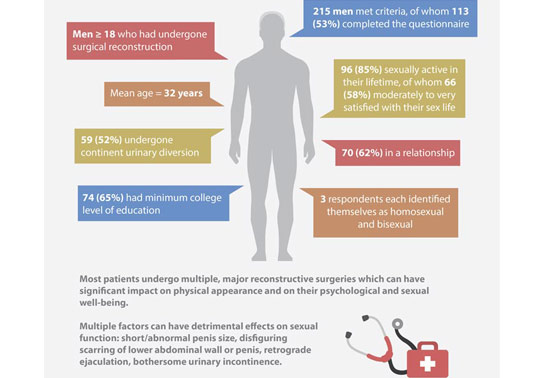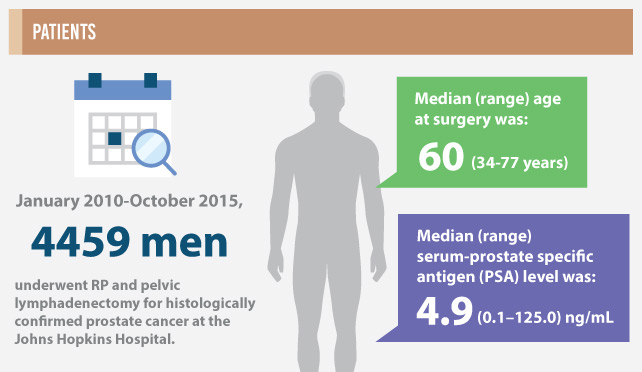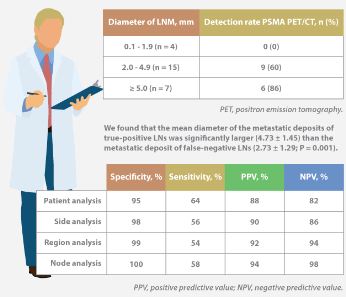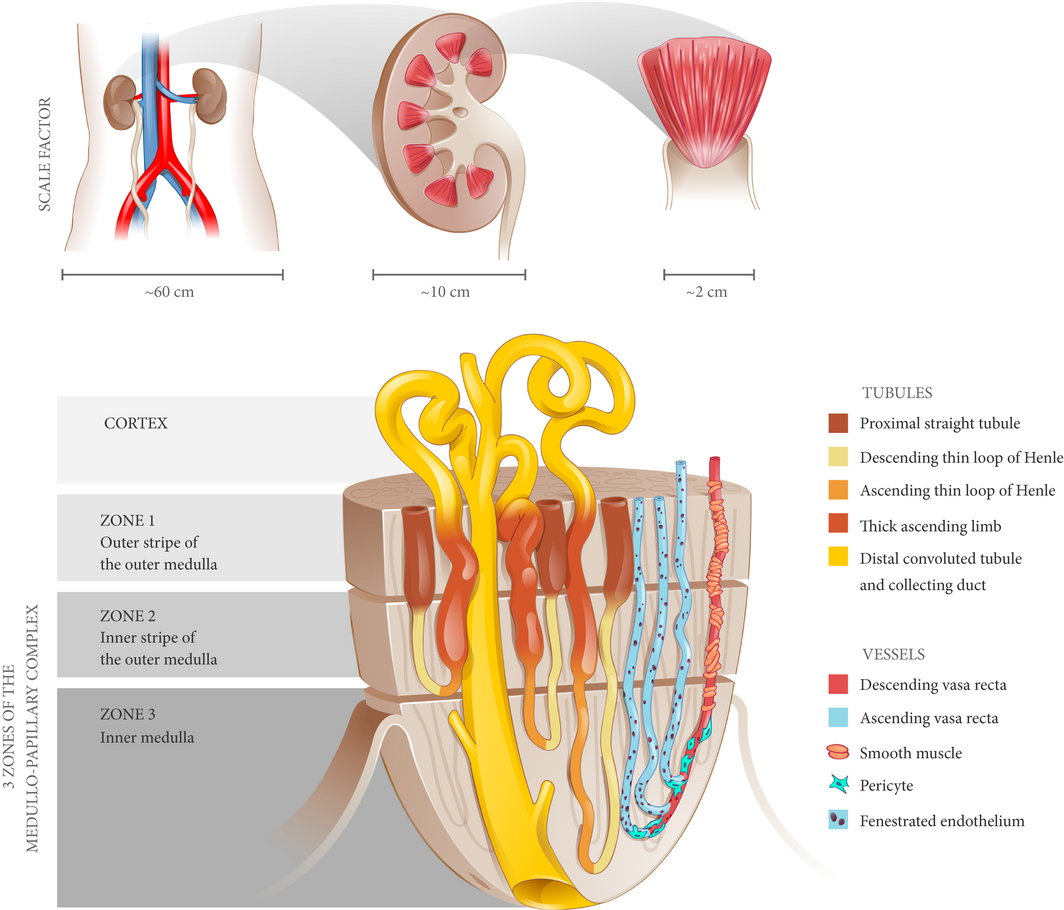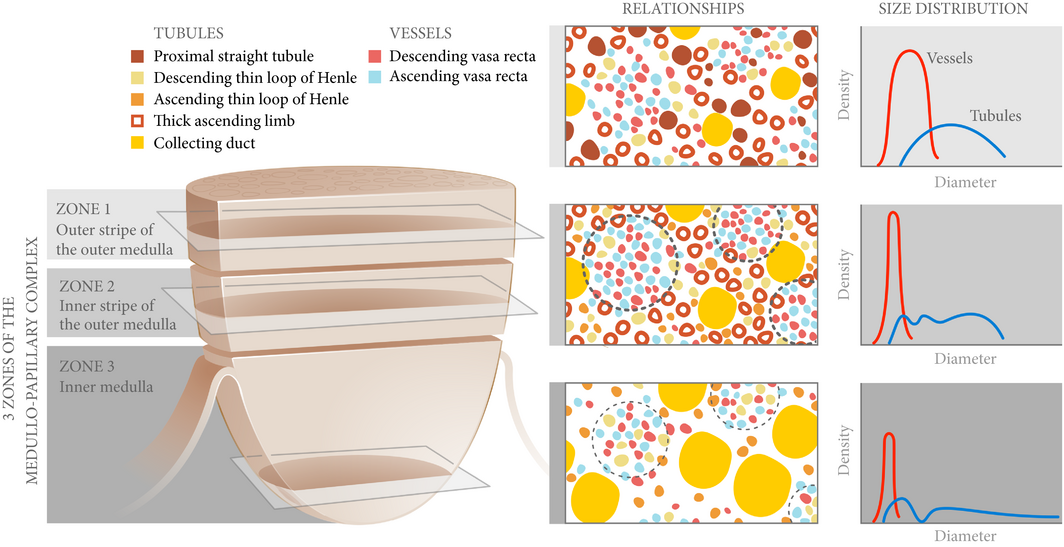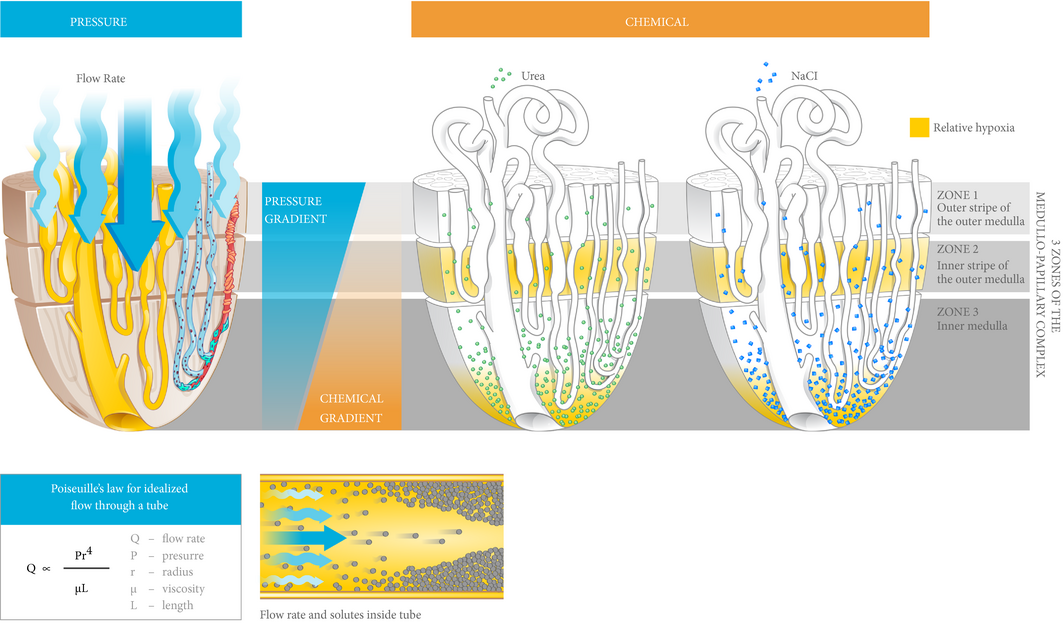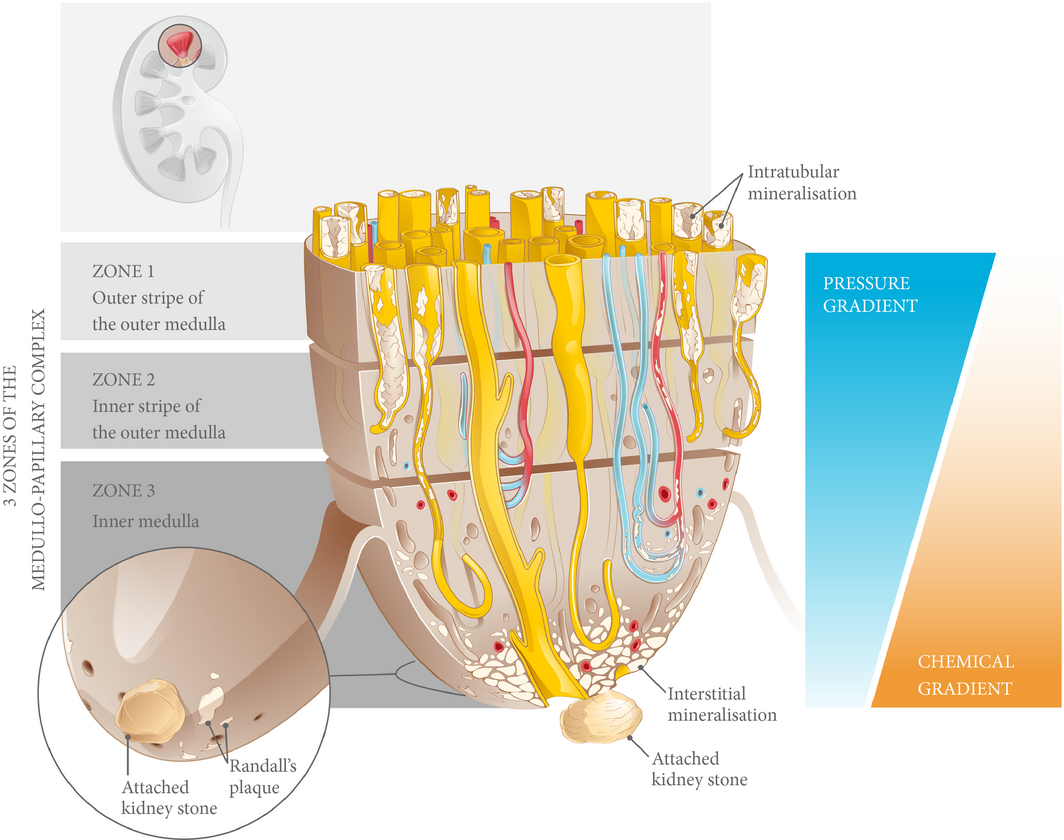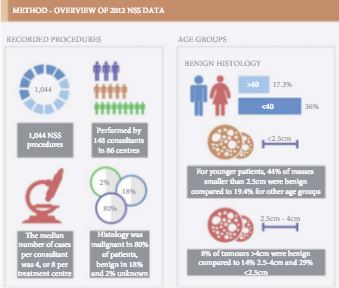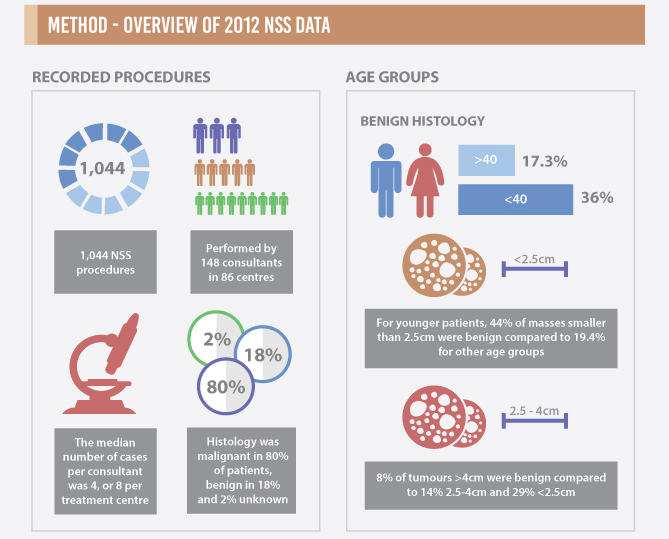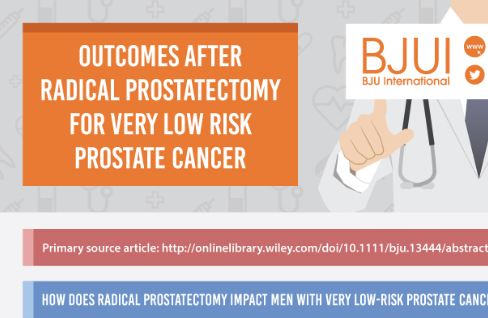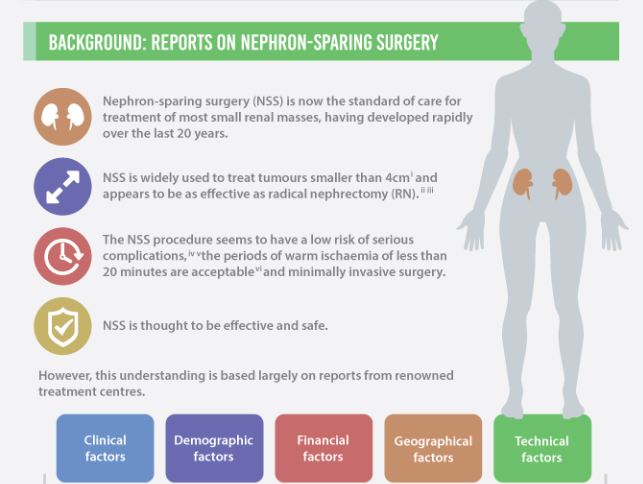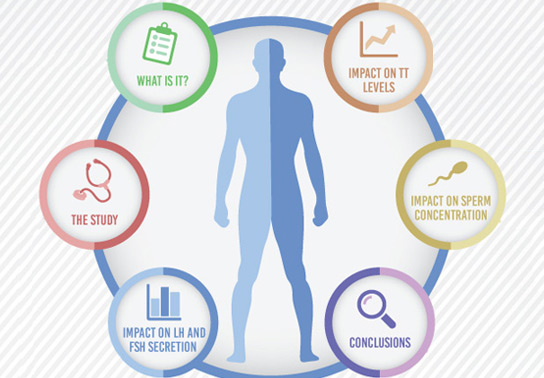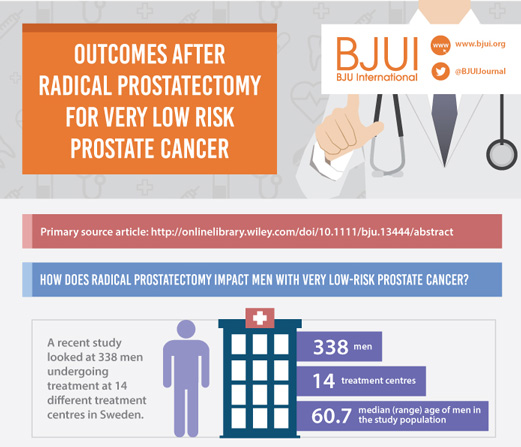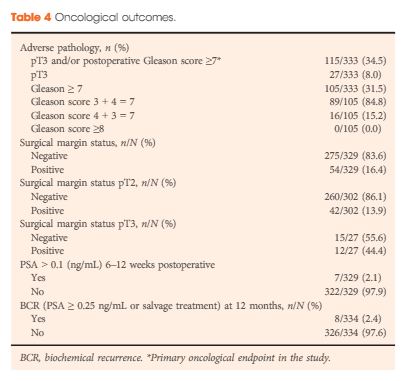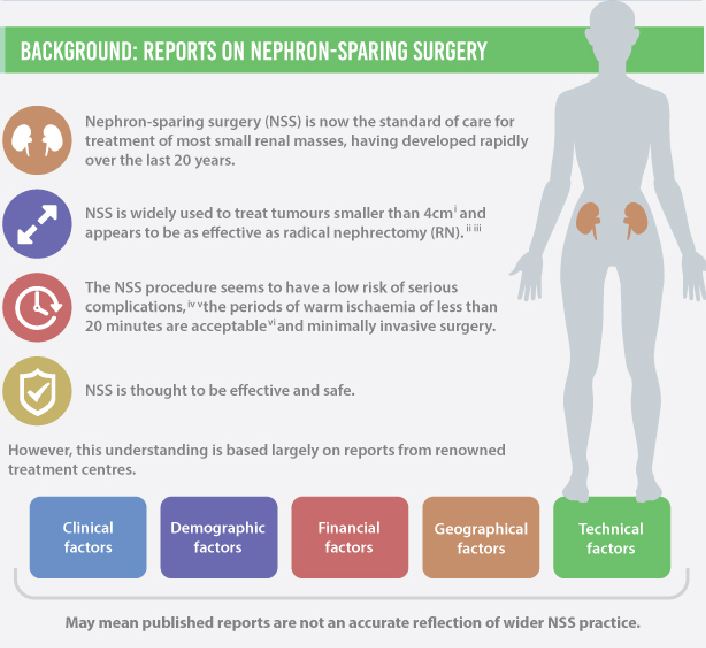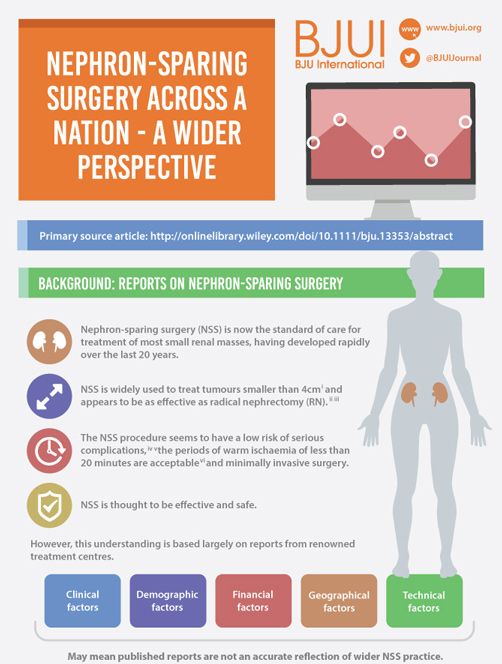Posts
Infographic: Partin Tables in the Contemporary Era
The Partin Tables in the Contemporary Era: Infographic to accompany the May 2017 Article of the Month
Download Slides of this infographic:
Infographic: 68Ga-PSMA PET/CT for LN staging in PCa
Infographic to accompany the February 2017 Article of the Month
Infographic: The origins of urinary stone disease: upstream mineral formations initiate downstream Randall’s plaque
Figure 1 The medullo-papillary complex. A total of 8–12 paraboloid complexes are contained within each human kidney. Each complex can be separated into three zones (Zones 1–3) distinguished by distinct segments of the loop of Henle. There are short- and long-looped nephrons and vessels. Owing to the paraboloid geometry of the medullo-papillary complex, shorter looped nephrons and vessels are contained in the periphery, and the longest looped nephrons and vessels are located centrally. Non-fenestrated descending vasa recta are surrounded by layers of smooth muscle, in contrast to the ascending vasa recta comprised of fenestrated endothelium. Within Zone 3, a transition occurs where pericytes replace smooth muscle.
Figure 2 Spatial relationships and size distributions of the tubules and vessels within the medullo-papillary complex. From Zone 1 to Zone 2, the ascending and descending vasa recta become organised into vascular bundles (dotted line) and interbundle regions. In Zone 3, the descending thin limbs join the vascular bundles (light dotted line), and these are separate from collecting duct clusters. Collecting ducts grow larger in diameter towards Zone 3 and coalesce to form the 6–12 ducts of Bellini. These anatomically specific compartments contribute to radial and axial concentration gradients along the course of the complex.
Figure 3 Medullo-papillary function is characterised by pressure and chemical gradients. Pressure gradients are present from Zone 1 to Zone 3. Due to the paraboloid form of the complex, larger diameter vasa recta are located centrally within the vascular bundles and have higher pressure gradients and flow rates than in the peripherally located vasa recta. Poiseuille’s law relates flow rate as proportional to pressure and radius to the fourth power, and inversely proportional to fluid viscosity and tube length. Within each tube, velocity of fluid is highest at the centerline, but decreases near the wall due to resistance. Over time, within a concentrated fluid, solutes are expected to accumulate along the walls. From Zone 1 to Zone 3, an increasing osmolarity gradient, contributed by primarily sodium salts and urea, generates the urine concentrating ability through countercurrent exchange. Areas vulnerable to hypoxic injury include the tip of the Zone 3, and Zone 2 because of the metabolically active thick ascending limbs and their relative physical separation from the descending vasa recta.
Figure 4 Biomineralisation of the medullo-papillary complex leading to Randall’s plaque. Over time, lower pressure gradients in the peripheral tubules relative to the centrally located tubules lead to intratubular mineralisation within Zones 1 and 2. The functional volume of the complex gradually decreases, and at a certain threshold, the change in pressure gradient drives a mechanoresponsive switch that leads to interstitial mineralisation in Zone 3. The accumulation of biominerals in the interstitial space eventually becomes endoscopically visible as Randall’s plaque, the foundation for a future urinary tract stone.
Abstract
Objectives
To describe a new hypothesis for the initial events leading to urinary stones. A biomechanical perspective on Randall’s plaque formation through form and function relationships is applied to functional units within the kidney, we have termed the ‘medullo-papillary complex’ – a dynamic relationship between intratubular and interstitial mineral aggregates.
Methods
A complete MEDLINE search was performed to examine the existing literature on the anatomical and physiological relationships in the renal medulla and papilla. Sectioned human renal medulla with papilla from radical nephrectomy specimens were imaged using a high resolution micro X-ray computed tomography. The location, distribution, and density of mineral aggregates within the medullo-papillary complex were identified.
Results
Mineral aggregates were seen proximally in all specimens within the outer medulla of the medullary complex and were intratubular. Distal interstitial mineralisation at the papillary tip corresponding to Randall’s plaque was not seen until a threshold of proximal mineralisation was observed. Mineral density measurements suggest varied chemical compositions between the proximal intratubular (330 mg/cm3) and distal interstitial (270 mg/cm3) deposits. A review of the literature revealed distinct anatomical compartments and gradients across the medullo-papillary complex that supports the empirical observations that proximal mineralisation triggers distal Randall’s plaque formation.
Conclusion
The early stone event is initiated by intratubular mineralisation of the renal medullary tissue leading to the interstitial mineralisation that is observed as Randall’s plaque. We base this novel hypothesis on a multiscale biomechanics perspective involving form and function relationships, and empirical observations. Additional studies are needed to validate this hypothesis.
*, *, † and *
*Department of Urology, and †Division of Biomaterials and Bioengineering, Department of Preventive and Restorative Dental Sciences, School of Dentistry, University of California San Francisco, San Francisco, CA, USA
January 2017 Editorial: Infographics
‘A picture is worth a thousand words’ is an English idiom that has been in use for over a 100 years. Never has it been truer than in the age of social media, when fans are perhaps more interested in ‘selfies’ with their celebrity superstars than in their autographs!
With this in mind, we at the BJUI launched infographics last year for some of our very best papers. And what a success it has been based on the positive responses from our avid readers on Twitter. The titles of the articles that were selected for this format were:
- Oncological and functional outcomes 1 year after radical prostatectomy for very-low-risk prostate cancer: results from the prospective LAPPRO trial [1].
- Nephron-sparing surgery across a nation – outcomes from the British Association of Urological Surgeons 2012 national partial nephrectomy audit [2].
- Oral enclomiphene citrate raises testosterone and preserves sperm counts in obese hypogonadal men, unlike topical testosterone: restoration instead of replacement [3].
All three featured amongst the list of the top 20 papers with most page views on www.bjui.org and the top 10 most downloaded articles from Wiley online library (WOL), reaching a figure of >2500. This compares well to our most downloaded ‘Guideline of Guidelines’on thromboprophylaxis [4] at 2264. The infographics lay out clear messages on important topics in a concise manner and have undeniable appeal to busy clinicians, who often have just a few valuable minutes to keep abreast with the latest highlights (Fig. 1).
Figure 1. Extract of infographics for the Fernando et al. [2] paper ‘Nephron-sparing surgery across a nation – outcomes from the British Association of Urological Surgeons 2012 national partial nephrectomy audit’. NSS, nephron-sparing surgery.
We also thought we would kick off the New Year with Guidelines on minimally invasive adrenalectomy from the International Consultation on Urological Diseases (ICUD) consultation [5]. And of course the ‘hot topic’ of enhanced recovery to try and reduce the length of stay for our cystectomy patients without increasing complications or readmission rates [6].
We are looking forward to engaging with you with more infographics in 2017.
, BJUI Editor-in-Chief
King’s Health Partners, London, UK
References
- Carlsson S, Jaderling F, Wallerstedt A et al. Oncological and functional outcomes 1 year after radical prostatectomy for very-low-risk prostate cancer: results from the prospective LAPPRO trial. BJU Int 2016; 118: 205–12
- Fernando A, Fowler S, O’Brien T, British Association of Urological Surgeons (BAUS). Nephron-sparing surgery across a nation – outcomes from the British Association of Urological Surgeons 2012 national partial nephrectomy audit. BJU Int 2016; 117: 874–82
- Kim ED, McCullough A, Kaminetsky J. Oral enclomiphene citrate raises testosterone and preserves sperm counts in obese hypogonadal men, unlike topical testosterone: restoration instead of replacement. BJU Int 2016; 117: 677–85
- Violette PD, Cartwright R, Briel M, Tikkinen KA, Guyatt GH. Guideline of guidelines: thromboprophylaxis for urological surgery. BJU Int 2016; 118: 351–8
- Ball MW, Hemal AK, Allaf ME. International Consultation on Urological Diseases and European Association of Urology International Consultation on Minimally Invasive Surgery in Urology: laparoscopic and robotic adrenalectomy. BJU Int 2017; 119: 13–21
- Baack Kukreja JE, Kiernan M, Schempp B et al. Quality improvement in cystectomy care with enhanced recovery (QUICCER study). BJU Int 2017; 119: 38–49
Article of the Week: LAPPRO trial – Oncological and Functional Outcomes 1 Year after RP for Very-Low-Risk PCa
Every Week the Editor-in-Chief selects an Article of the Week from the current issue of BJUI. The abstract is reproduced below and you can click on the button to read the full article, which is freely available to all readers for at least 30 days from the time of this post.
In addition to the article itself, there is an accompanying editorial written by a prominent member of the urological community. This blog is intended to provoke comment and discussion and we invite you to use the comment tools at the bottom of each post to join the conversation.
Finally, the third post under the Article of the Week heading on the homepage will consist of additional material or media. This week we feature a video from Dr. Stefan Carlsson, Dr. Anna Wallerstedt and Dr Rodolfo Sanchez, discussing their paper.
If you only have time to read one article this week, it should be this one.
Oncological and functional outcomes 1 year after radical prostatectomy for very-low-risk prostate cancer: results from the prospective LAPPRO trial
*, Fredrik Jaderling†, *, ‡, §
, ¶, **, ††, §, ‡‡ and ‡,§§
*Department of Molecular Medicine and Surgery, Section of Urology, Karolinska Institutet, †Department of Molecular Medicine and Surgery, Section of Radiology, Karolinska Institutet, ‡Department of Oncology and Pathology, Division of Clinical Cancer Epidemiology, Karolinska Institutet, Stockholm, §Department of Urology, Institute of Clinical Sciences, Sahlgrenska Academy at the University of Gothenburg, ¶Faculty of Nursing, School of Health Sciences, University of Iceland, Iceland, **Department of Surgery (Urology Service), Memorial Sloan Kettering Cancer Center, New York, NY, USA, ††Department of Urology, Skane University Hospital, Lund University, Lund, ‡‡ Department of Surgery, Institute of Clinical Sciences, Sahlgrenska Academy at the University of Gothenburg, and §§Division of Clinical Cancer Epidemiology, Department of Oncology, Institute of Clinical Sciences, Sahlgrenska Academy at the University of Gothenburg, Gothenburg, Sweden
Click on image for full size infographic
Objectives
To analyse oncological and functional outcomes 12 months after treatment of very-low-risk prostate cancer with radical prostatectomy in men who could have been candidates for active surveillance.
Patients and Methods
We conducted a prospective study of all men with very-low-risk prostate cancer who underwent radical prostatectomy at one of 14 participating centres. Validated patient questionnaires were collected at baseline and after 12 months by independent healthcare researchers. Biochemical recurrence (BCR) was defined as prostate-specific antigen (PSA) ≥0.25 ng/mL or treatment with salvage radiotherapy or with hormones. Urinary continence was defined as <1 pad changed per 24 h. Erectile function was defined as ability to achieve erection hard enough for penetration more than half of the time after sexual stimulation. Changes in tumour grade and stage were obtained from pathology reports. We report descriptive frequencies and proportions of men who had each outcome in various subgroups. Fisher’s exact test was used to assess differences between the age groups.
Results
Of the 4003 men in the LAPPRO cohort, 338 men fulfilled the preoperative national criteria for very-low-risk prostate cancer. Adverse pathology outcomes included upgrading, defined as pT3 or postoperative Gleason sum ≥7, which was present in 35% of the men (115/333) and positive surgical margins, which were present in 16% of the men (54/329). Only 2.1% of the men (7/329) had a PSA concentration >0.1 ng/mL 6–12 weeks postoperatively. Erectile function and urinary continence were observed in 44% (98/222) and 84% of the men (264/315), respectively, 12 months postoperatively. The proportion of men achieving the trifecta, defined as preoperative potent and continent men who remained potent and continent with no BCR, was 38% (84/221 men) at 12 months.
Conclusions
Our prospective study of men with very-low-risk prostate cancer undergoing open or robot-assisted radical prostatectomy showed that there were favourable oncological outcomes in approximately two-thirds. Approximately 40% did not have surgically induced urinary incontinence or erectile dysfunction 12 months postoperatively. These results provide additional support for the use of active surveillance in men with very-low-risk prostate cancer; however, the number of men with risk of upgrading and upstaging is not negligible. Improved stratification is still urgently needed.
Article of the Week: NSS Across a Nation
Every Week the Editor-in-Chief selects an Article of the Week from the current issue of BJUI. The abstract is reproduced below and you can click on the button to read the full article, which is freely available to all readers for at least 30 days from the time of this post.
In addition to the article itself, there is an accompanying editorial written by a prominent member of the urological community. This blog is intended to provoke comment and discussion and we invite you to use the comment tools at the bottom of each post to join the conversation.
Finally, the third post under the Article of the Week heading on the homepage will consist of additional material or media. This week we feature a video from Archie Fernando and Tim O’Brien, discussing their paper.
If you only have time to read one article this week, it should be this one.
Nephron-sparing surgery across a nation – outcomes from the British Association of Urological Surgeons 2012 national partial nephrectomy audit
*†, * and *†, on behalf of the British
Association of Urological Surgeons (BAUS)
*BAUS, The Royal College of Surgeons of England, and †The Urology Centre, Guy’s and St Thomas’ NHS Foundation Trust, London, UK
Click on image for full size infographic
Objective
To determine the scope and outcomes of nephron-sparing surgery (NSS), i.e. partial nephrectomy, across the UK and in so doing set a realistic benchmark and identify fresh contemporary challenges in NSS.
Patients and Methods
In 2012 reporting of outcomes of all types of nephrectomy became mandatory in the UK. In all, 148 surgeons in 86 centres prospectively entered data on 6 042 nephrectomies undertaken in 2012. This study is a retrospective analysis of the NSS procedures in the dataset.
Results
A total of 1 044 NSS procedures were recorded and the median (range) surgical volume was 4 (1–39) per consultant and 8 (1–59) per centre. In all, 36 surgeons and 10 centres reported on only one NSS. The indications for NSS were: elective with a tumour of ≤4.5 cm in 59%, elective with a tumour of >4.5 cm in 10%, relative in 7%, imperative in 12%, Von Hippel–Lindau in 1%, and unknown in 11%. The median (range) tumour size was 3.4 (0.8–30) cm. The technique used was minimally invasive surgery in 42%, open in 58%, with conversions in 4%. The histology results were: malignant in 80%, benign in 18%, and unknown in 2%. In patients aged <40 years 36% (36/101) had benign histology vs 17% (151/874) of those aged ≥40 years (P < 0.01). In patients with tumours of <2.5 cm 29% (69/238) had benign histology vs 14% (57/410) with tumours of 2.5–4 cm vs 8% (16/194) with tumours of ≥4 cm (P = 0.02). In patients aged <40 years with of tumours of <2.5 cm 44% (15/34) were benign. The 30-day mortality was 0.1% (1/1 044). There were major complications (Clavien–Dindo grade of ≥IIIa) in 5% (53/1 044). There was an increased risk of complications after extended elective NSS of 19% (19/101) vs elective at 12% (76/621) (relative risk [RR] 1.54; P < 0.01). Margins were recorded in 68% (709/1 044) of the patients, with positive margins identified in 7% (51/709). Positive surgical margins after NSS for pathological T3 (pT3) tumours were found in 47.8% (11/23) vs 6.1% (32/523) for pT1a, tumours (RR 5.61; P < 0.01). In all, 14% (894/6 042) of the patients underwent surgery for T1a tumours: 55% (488/894) by NSS, 42% (377/894) by radical nephrectomy (RN), and in 3% (29/894) the procedure used was unknown. Major complications after occurred in 4.9% (24/488) of NSS vs 1.3% (5/377) of RN (P < 0.01). Limitations included poor reporting of renal function data and no data on tumour complexity.
Conclusions
In its first year, mandatory national reporting has provided several challenging contemporary insights into NSS.

